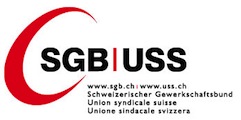Publications des institutions partenaires
Fast methods for large-scale non-elliptical portfolio optimization
Simple, fast methods for modeling the portfolio distribution corresponding to a non-elliptical, leptokurtic, asymmetric, and conditionally heteroskedastic set of asset returns are entertained. Portfolio optimization via simulation is demonstrated, and its benefits are discussed. An augmented mixture of normals model is shown to be superior to both standard (no short selling)...
Institution partenaire
English / 01/09/2014
An equilibrium analysis of the simultaneous ascending auction
We provide a Bayes–Nash equilibrium analysis of the simultaneous ascending auction (SAA) when local bidders interested in a single item compete against global bidders interested in aggregating many items. We first assume that each local bidder values only a specific item, e.g. the license for the region where it has monopoly power, and that global bidders' valuation functions...
Institution partenaire
English / 01/09/2014
A practical two-step method for testing moment inequalities
This paper considers the problem of testing a finite number of moment inequalities. We propose a two-step approach. In the first step, a confidence region for the moments is constructed. In the second step, this set is used to provide information about which moments are “negative.” A Bonferonni-type correction is used to account for the fact that with some probability the moments may...
Institution partenaire
English / 01/09/2014
Nestedness in networks: a theoretical model and some applications
We develop a dynamic network formation model that can explain the observed nestedness in real-world networks. Links are formed on the basis of agents' centrality and have an exponentially distributed life time. We use stochastic stability to identify the networks to which the network formation process converges and find that they are nested split graphs. We completely determine...
Institution partenaire
English / 01/09/2014
Are subjective distributions in inflation expectations symmetric?
We conducted an anonymous survey in December 2013 asking around 200 economists worldwide to provide an interval (a to b) of average inflation in the US expected "over the next two years". The respondents were also instructed to give a probability of inflation being higher or lower than the mid-interval (a+b)/2. The aggregate distribution of inflation expectations we obtain...
Institution partenaire
English / 01/09/2014
Analyzing educational achievement differences between second-generation immigrants: comparing Germany and German-speaking Switzerland
In this study, I provide evidence that the educational achievement of second-generation immigrants in German-speaking Switzerland is greater than in Germany. The impact of the first-generation immigrants’ destination decision on their offspring’s educational achievement seems to be much more important than has been recognized by the existing literature. I identify the test score gap...
Institution partenaire
English / 01/09/2014
Communication & competition
Charness and Dufwenberg (Am. Econ. Rev. 101(4):1211–1237, 2011) have recently demonstrated that cheap-talk communication raises efficiency in bilateral contracting situations with adverse selection. We replicate their main finding and extend their design to include competition between agents. We find that communication and competition act as “substitutes:” communication raises...
Institution partenaire
English / 01/09/2014
Surprise beyond prediction error
Surprise drives learning. Various neural “prediction error” signals are believed to underpin surprise-based reinforcement learning. Here, we report a surprise signal that reflects reinforcement learning but is neither un/signed reward prediction error (RPE) nor un/signed state prediction error (SPE). To exclude these alternatives, we measured surprise responses in the absence of RPE...
Institution partenaire
English / 01/09/2014
Monitoring public procurement: evidence from a regression discontinuity design in Chile
The government is the biggest buyer in the economy of most countries. At the same time, the public procurement process if often thought to be fraught with corruption and malpractice. However, there is little evidence regarding the impact of audits aimed at reducing such malpractice. This paper investigates the effect of being audited on public entities' subsequent procurement...
Institution partenaire
English / 01/09/2014
Short- and long-term effects of unemployment on fertility
Scholars have been examining the relationship between fertility and unemployment for more than a century. Most studies find that fertility falls with unemployment in the short run, but it is not known whether these negative effects persist, because women simply may postpone childbearing to better economic times. Using more than 140 million US birth records for the period 1975–2010,...
Institution partenaire
English / 01/09/2014
From left-skewness to symmetry: how body-height distribution among Swiss conscripts has changed shape since the late 19th century
Institution partenaire
English / 26/08/2014
Unique Equilibrium in Contests with a Continuum of Types
It is shown that rent-seeking contests with continuous and independent type distributions possess a unique pure-strategy Nash equilibrium.
Institution partenaire
English / 23/08/2014
Profitability and cost shifting in government procurement contracts
Institution partenaire
English / 19/08/2014
The executive turnover risk premium
CEO compensation has increased substantially over the past 15 years, but so has forced turnover. Motivated by this observation, we investigate whether part of the development of CEO pay can be explained by a premium which compensates CEOs for increased job risk. We find that for the CEOs of the largest US corporations, a one percentage point increase in turnover risk is, on average,...
Institution partenaire
English / 01/08/2014
Experimental comparison between markets on dynamic permit trading and investment in irreversible abatement with and without non-regulated companies
Institution partenaire
English / 01/08/2014
Employment polarization and the role of the apprenticeship system
This paper studies the effects of the apprenticeship system on innovation and labor market polarization. A stylized model with two key features is developed: (1) apprentices are more productive due to industry-specific training, but (2) from the firm’s perspective, when training apprentices, technological innovation is costly since training becomes obsolete. Thus, apprentices...
Institution partenaire
English / 01/08/2014
China’s great convergence and beyond
A recent wave of economic research has studied the transformation of China from a poor country in the 1970s to a middle-income economy today. Based on this literature, we discuss the factors driving China’s development process. We provide a historical account of China’s rise, fall, and resurgence. We then discuss the stylized facts associated with China’s growth process and review a...
Institution partenaire
English / 01/08/2014
The neurobiology of rewards and values in social decision making
How does our brain choose the best course of action? Choices between material goods are thought to be steered by neural value signals that encode the rewarding properties of the choice options. Social decisions, by contrast, are traditionally thought to rely on neural representations of the self and others. However, recent studies show that many types of social decisions may also...
Institution partenaire
English / 01/08/2014
Handing out guns at a knife fight: behavioral limitations of subgame-perfect implementation
The assumption that payoff-relevant information is observable but not verifiable is important for many core results in contract, organizational and institutional economics. However, subgame-perfect implementation (SPI) mechanisms - which are based on off-equilibrium arbitration clauses that impose fines for lying and the inappropriate use of arbitration - can be used to render payoff...
Institution partenaire
English / 01/08/2014
Growing (with capital controls) like China
This paper explores the effects of capital controls and policies regulating interest rates and the exchange rate in a model of economic transition applied to China. It builds on Song, Storesletten, and Zilibotti (2011) who construct a growth model consistent with salient features of the recent Chinese growth experience: high output growth, sustained returns on capital investment,...
Institution partenaire
English / 01/08/2014
Pages
Le portail de l'information économique suisse
© 2016 Infonet Economy












